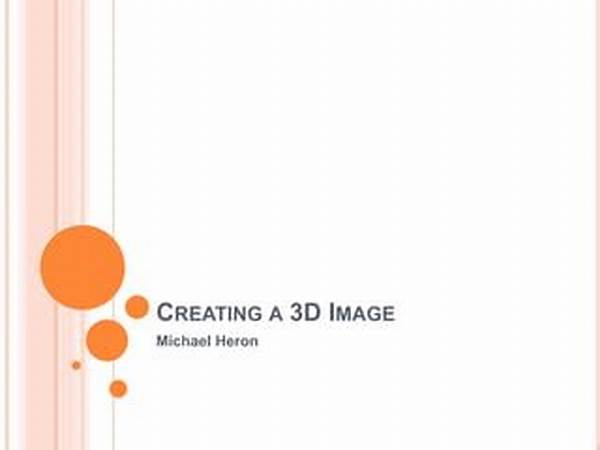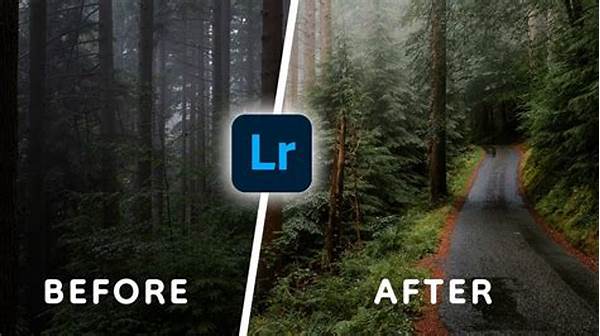Hey there, fellow tech enthusiasts! If you’ve ever marveled at the exquisite worlds created in video games, movies, or architectural renderings, you’ve witnessed the magic of 3D graphics. But have you ever wondered how these stunning visuals come to life? Well, buckle up, because today we’re diving into the realm of techniques for generating 3D graphics. Whether you’re a seasoned artist looking to polish your skills or an absolute newbie curious about what’s under the hood, this journey into 3D world-building is bound to spark your creativity.
Read Now : Online Digital Retouching Courses
Diving into the Basics
So, how exactly do these dazzling 3D graphics get made? Well, it all starts with a mesh. In the simplest terms, a mesh is like a digital skeleton made up of vertices, edges, and faces. This forms the base structure of your 3D model. From there, artists apply techniques like modeling, which involves shaping and sculpting these meshes into recognizable forms. Think of it like digital clay work. Once modeled, the next step involves texturing the surface, which is essentially wrapping the model with a skin of colors and designs to make it pop. Lighting and shading then add depth and realism, making your models look less like glorified polystyrene and more akin to their real-world counterparts.
But wait, there’s more! Animation moves these static models into the world of action. By creating a series of poses, 3D artists bring characters or objects to life, letting them dance, fight, or even just stand around looking cool. It’s a meticulous process, but when done right, it can make your models ooze personality. Finally, rendering is the cherry on top. Computers process your 3D scenes to generate those final polished images we’ve come to adore. With a firm grasp of these techniques for generating 3d graphics, artists have the power to craft virtual worlds limited only by their imagination.
Tools of the Trade
1. Modeling Software: Blender, Maya, and 3ds Max are the holy grail for artists wanting to dive into 3D modeling. These tools make the techniques for generating 3d graphics not only accessible but genuinely exciting to experiment with.
2. Texturing Tools: With Substance Painter and Photoshop, your digital canvases come alive. They are essential for adding flair to those 3D surfaces and mastering techniques for generating 3d graphics.
3. Rendering Engines: V-Ray and Arnold help make your images look sharp, polished, and jaw-droppingly realistic, tying all the techniques for generating 3d graphics into one stunning visual package.
4. Animation Software: From Autodesk’s beastly portfolio to open-source gems, animation tools make your models groove and swagger. Learning these tools can deepen your techniques for generating 3d graphics.
5. Learning Resources: Online tutorials and digital art communities are your best friends. They’ve gathered the collective wisdom of countless artists who have honed their techniques for generating 3d graphics over the years.
The Intersection of Art and Technology
Ah, the wondrous marriage of art and technology! It’s where creativity meets technical finesse. You see, mastering techniques for generating 3d graphics is very much about finding that sweet spot between the two. It’s not just about knowing your way around software; it’s also about visual storytelling. The best 3D artists can conjure emotions and convey messages through their works. From crafting fantastical creatures to designing hyper-realistic environments, there’s an artistic narrative woven through each digital brushstroke.
However, as intuitive as these tools and techniques may be, they can sometimes feel daunting. The trick is persistence. Stay curious, embrace those eureka moments, and don’t shy away from failures – they’re just stepping stones on your creative odyssey. Remember, every masterpiece you create is a testament to your growing prowess in wielding techniques for generating 3d graphics.
Mastering Advanced Techniques
1. Procedural Generation: This involves creating elements algorithmically. It’s a neat trick in the techniques for generating 3d graphics because it can produce complex scenes with less manual effort.
2. Photogrammetry: Talk about a game-changer. This involves creating 3D models by stitching photos together. A must-know in techniques for generating 3d graphics for realism.
3. Shaders: The alchemists of 3D graphics, shaders manipulate lighting and surfaces on-the-fly. They’re key when you’re looking to elevate your techniques for generating 3d graphics.
4. Physics Simulations: These let you mimic real-world forces, giving your scenes a lived-in feel. These simulations refine your arsenal of techniques for generating 3d graphics.
Read Now : Creative Photo Retouching Training
5. Motion Capture: Perfect for animating lifelike characters. Combine it with other techniques for generating 3d graphics and watch the magic unfold.
6. Dynamic Simulation: Using software to simulate fluids and soft bodies, this technique is a boon for intricate projects and showcases the depth of techniques for generating 3d graphics.
7. Virtual Reality (VR): A whole new playground, VR provides immersive opportunities and challenges your techniques for generating 3d graphics in extraordinary ways.
8. Ray Tracing: This technique involves plotting the path of light for photorealistic rendering. A holy grail in techniques for generating 3d graphics, especially for real-time applications like gaming.
9. AI Use: Artificial Intelligence isn’t just about robots. AI tools can optimize workflows and amplify techniques for generating 3d graphics.
10. Augmented Reality (AR): Blurring the lines between the digital and the real, mastering AR opens up new dimensions in techniques for generating 3d graphics.
Exploring Creativity Through 3D
When journeying through the universe of techniques for generating 3d graphics, you get to wear many hats. Ever considered yourself an explorer of imaginary landscapes? In 3D art, not only can you explore them—you create them. Each terrain and creature can be as wild and unexpected as you dare. Truly, there’s no geek like a 3D graphics geek, where mastery of software and a penchant for storytelling collide. It’s all about creating new realities one polygon at a time.
Different projects demand different approaches. For instance, while vibrant, stylized graphics shine in games like Fortnite, heavyweight realism reigns supreme in architectural visualizations or VR simulations. The beauty of it all? Techniques for generating 3d graphics are constantly evolving, meaning there’s always something fresh to learn and experiment with. The game keeps changing, the goals keep shifting, and your skills? They keep leveling up.
Tips for Aspiring Creators
Alright, let’s get real. If you’re reading this, chances are you’re either in love with the 3D process or curious enough to give it a shot. Here’s a tip: dive headfirst into the community. Whether that means joining forums, attending virtual webinars, or simply binge-watching tutorials, exploring techniques for generating 3d graphics is a journey best shared. Exchange ideas, get feedback, and remember that every expert was once a beginner.
Don’t be afraid to mix it up. Mash different styles. Blow past traditional boundaries. Your creations are limited only by your imagination and willingness to experiment with techniques for generating 3d graphics. Keep pushing, keep learning. After all, where some see virtual landscapes, we, the dreamers and doers, see boundless frontiers awaiting our touch. So, what are you waiting for? Dive into the digital ether and craft your masterpieces!



